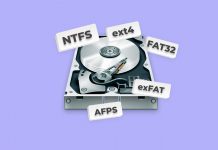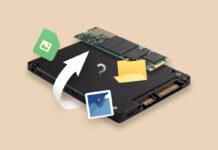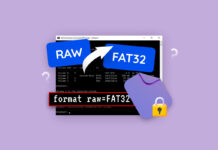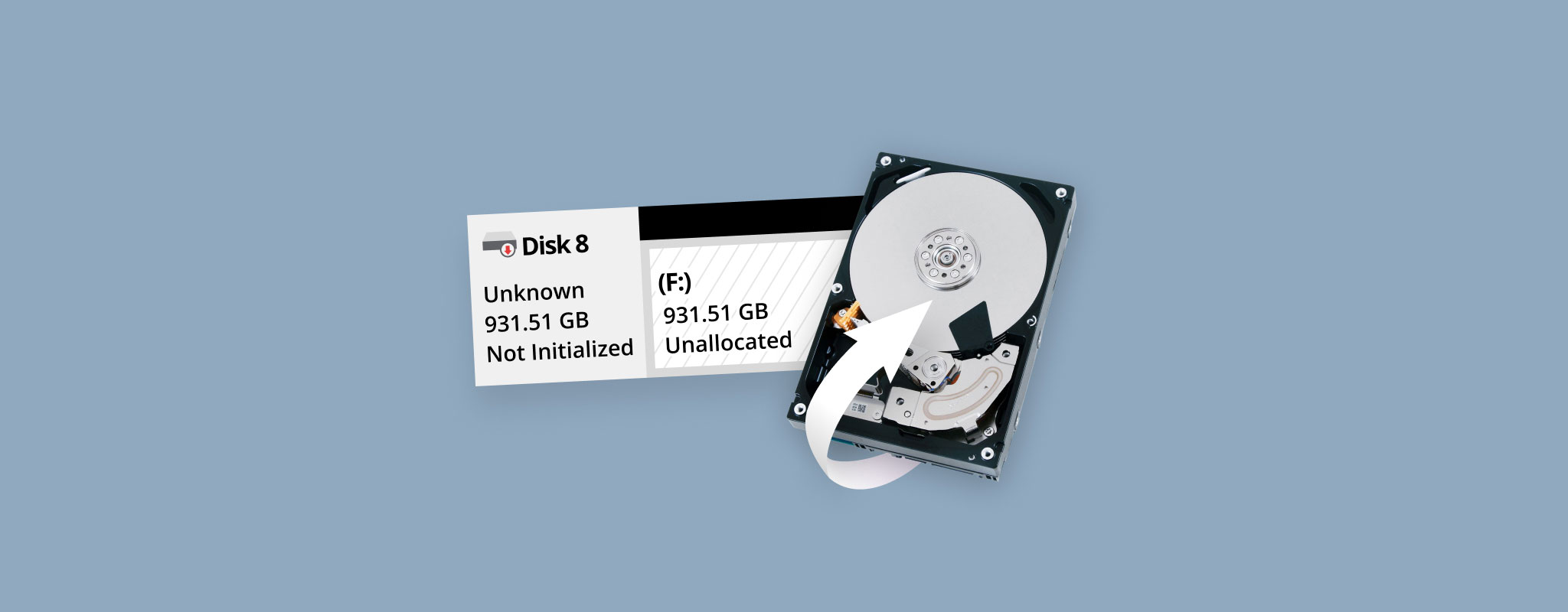 When a hard drive suddenly shows as “unallocated” in Windows Disk Management, you’re facing two distinct challenges. First, you need to recover all important data because the issue could be a sign of major corruption. Second, you need to fix the drive to make it usable again. This guide walks you through both processes.
When a hard drive suddenly shows as “unallocated” in Windows Disk Management, you’re facing two distinct challenges. First, you need to recover all important data because the issue could be a sign of major corruption. Second, you need to fix the drive to make it usable again. This guide walks you through both processes.
What Is an Unallocated Hard Drive
An unallocated hard drive is a storage device that Windows is unable to recognize or use because it lacks a valid file system structure (at least according to Windows).
Without a file system structure, the hard drive is like a library where all the books have had their covers and indexes removed—the content is still there, but there’s no way to find anything or know what’s available.
The three most common causes of a drive becoming unallocated are:
- User error. Many hard drives or individual partitions have become unallocated due to the incorrect use of disk partitioning tools by careless and/or uninformed users.
- Logical corruption. Damage to the drive’s file system or partition table caused by sudden power failures, improper system shutdowns, or interruptions during critical disk operations can also unallocate a hard drive.
- Malware. Certain types of malware, such as Petya, specifically target a drive’s partition table or Master Boot Record (MBR). When they damage manage to cause damage, Windows often loses its ability to recognize the drive’s structure.
The good news is that because an unallocated drive status typically only affects the drive’s organizational structure rather than the actual data, you can recover most or all of your data before attempting to fix the drive itself.
Note that storage devices can also appear as unallocated when they’re brand new. For example, many USB flash drives come unallocated from the factory. In these cases, where you know there’s no data to recover, you can simply create a new partition and format it with a file system to make the drive usable.
How to Recover Data From an Unallocated Space
There are many software tools for Windows that can help you recover data from an unallocated space, but my personal recommendation is Disk Drill, and for good reason.
Despite being one of the easiest-to-use solutions of its kind, Disk Drill is compatible with all Windows file systems (FAT16/32, exFAT, NTFS, and others)—even when the drive is showing as unallocated. When file system information isn’t available, Disk Drill can also recover data based on file signatures, supporting over 400 different file types.
But the most important reason why I recommend Disk Drill is its ability to create byte-to-byte backups of unallocated storage devices, turning them into complete image files that contain all data. You can then mount the image directly in Disk Drill and safely recover data from it.
Creating a byte-to-byte backup before attempting recovery is an important best practice, especially if the unallocation was caused by corruption or malware. If anything goes wrong during the recovery process, you’ll have an exact copy of your drive’s data to fall back on.
To create a byte-to-byte backup using Disk Drill:
- Download and install Disk Drill.
- Launch Disk Drill and select Drive Backup from the left menu.
- Select your unallocated drive from the list.
- Click Byte-to-byte Backup.
- Choose a destination for the backup file (must be on a different drive).
- Wait for the backup process to complete.
With the backup created, you can mount it and recover data from it:
- Launch Disk Drill if it’s not running already, and make sure you’re in the Storage Devices section.
- Click the Attach disk image option below the list of available storage devices and select your backup image file.
- Select the mounted backup image file from the list and click Search for lost data.
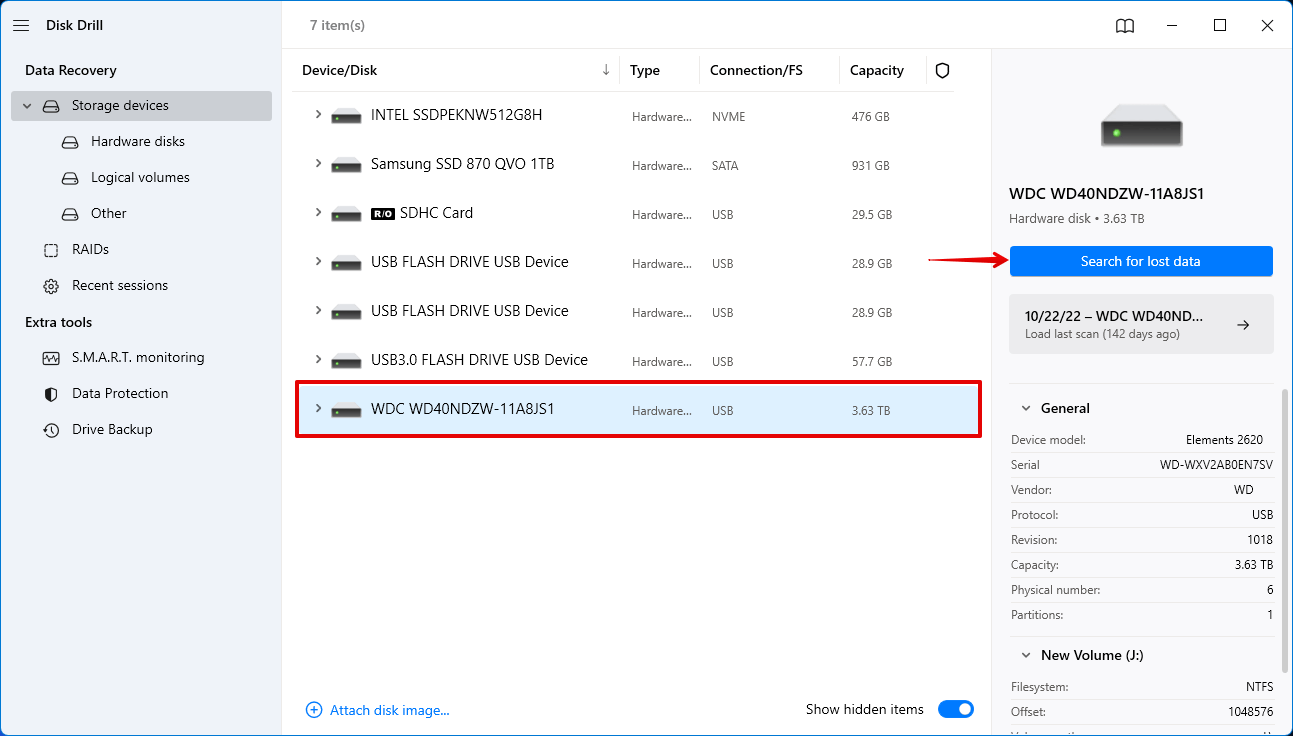
- Click Review found items once Disk Drill’s scan has finished. If you’re only searching for specific file types, click one of the colored file type icons instead. Or, recover everything by clicking Recover all.
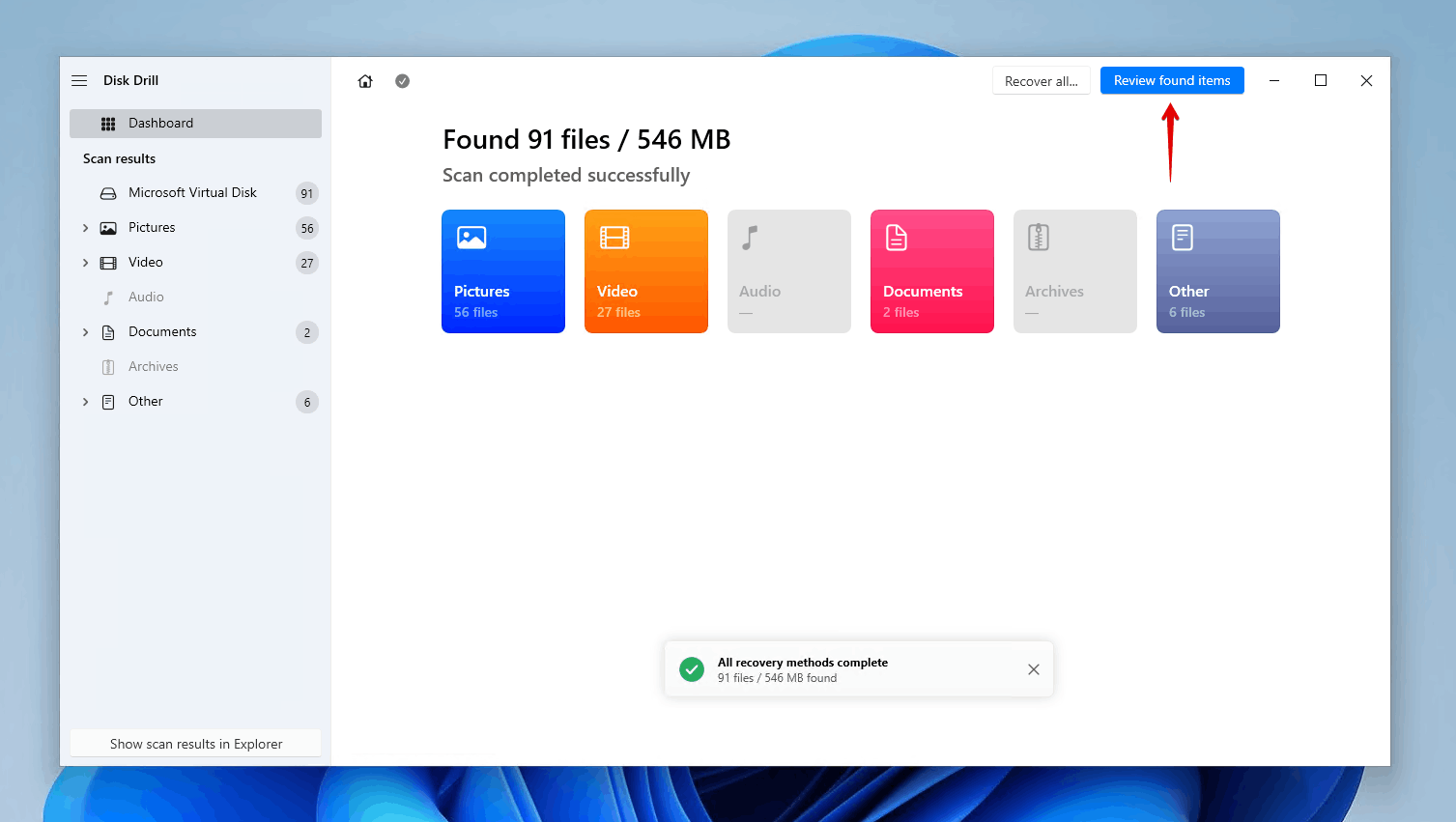
- Select the files you want to recover from the unallocated hard drive. The recovery chances column and preview panel give you a good indication of what data can and cannot be recovered. If a lot of data was found, make use of the filter buttons to narrow the search results. When you’re ready, click Recover.
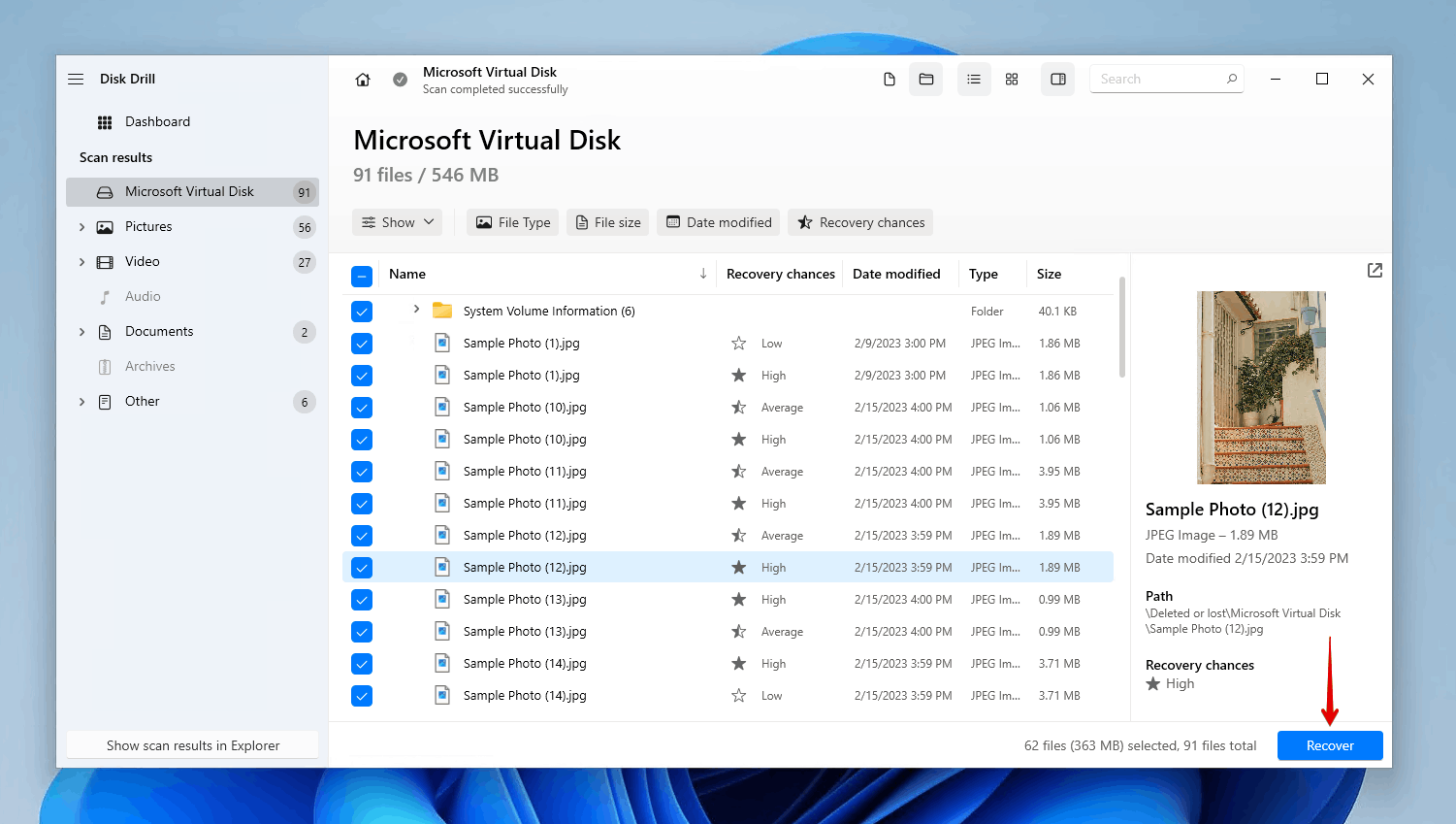
- Select a recovery location. Make sure you’re not restoring the data to the same drive you’re recovering it from to avoid data corruption. Click Next to complete recovery.
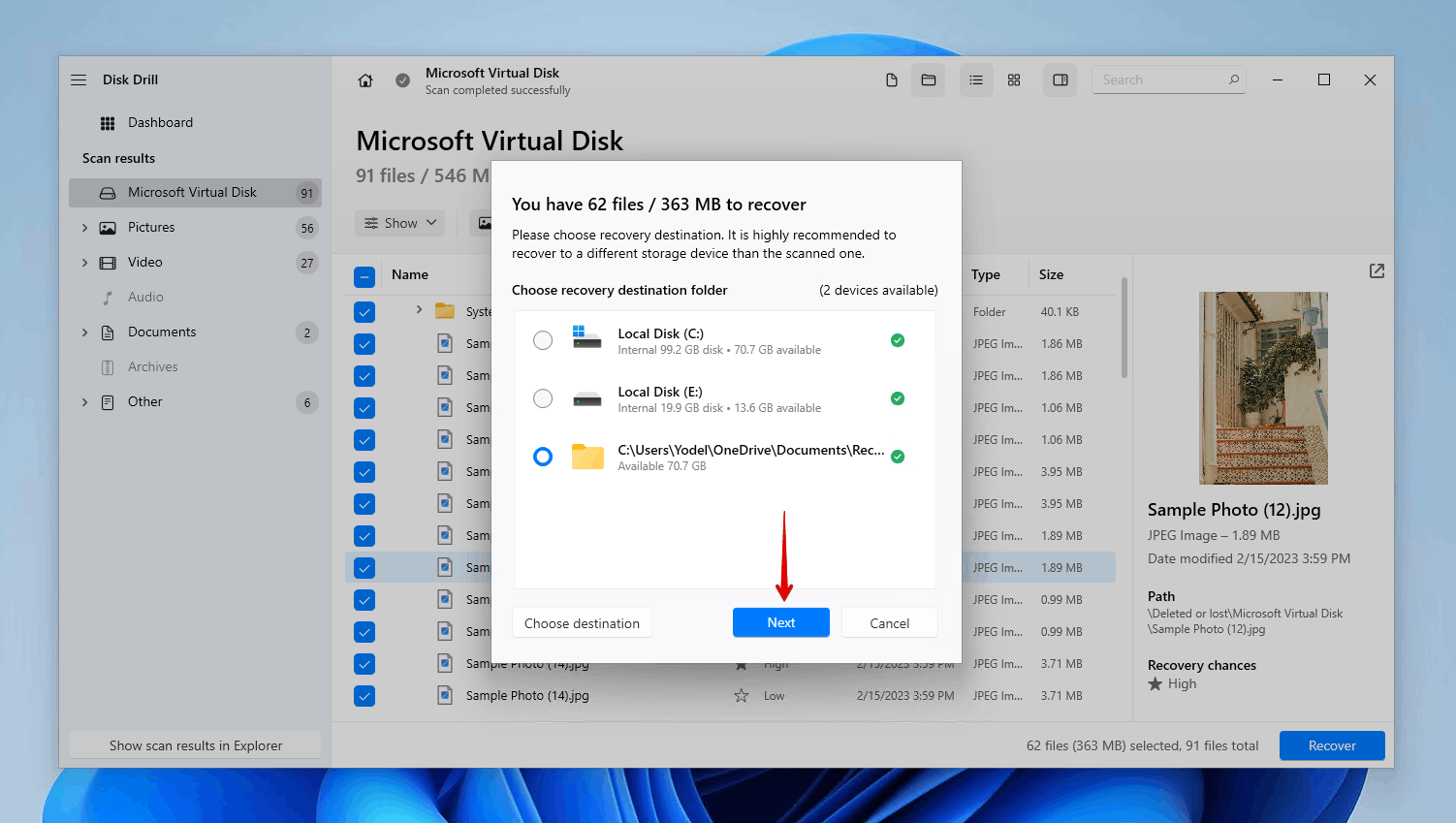
The free version of Disk Drill limits recovery to 500 MB of data. For larger recoveries, you’ll need to upgrade to the Pro version. However, you can use the free version to scan your drive and verify that your files are recoverable before purchasing by previewing them and looking at the recovery chance estimates displayed by Disk Drill.
How to Fix an Unallocated Hard Drive
With all important data recovered, you can now move on to fixing your unallocated hard drive so that you can use it again.
Method 1:Use TestDisk
TestDisk is an open-source tool specifically designed to recover lost partitions and fix various logical drive issues, and I always recommend it as the best solution for fixing an unallocated hard drive on Windows.
The only problem is that TestDisk doesn’t have a graphical user interface, so you’ll have to navigate using your keyboard’s arrow keys and follow the text prompts carefully. Don’t worry though—I’ll walk you through the exact steps needed to recover your partitions:
- Download TestDisk and extract it to a folder on your computer.
- Run testdisk_win.exe as administrator.
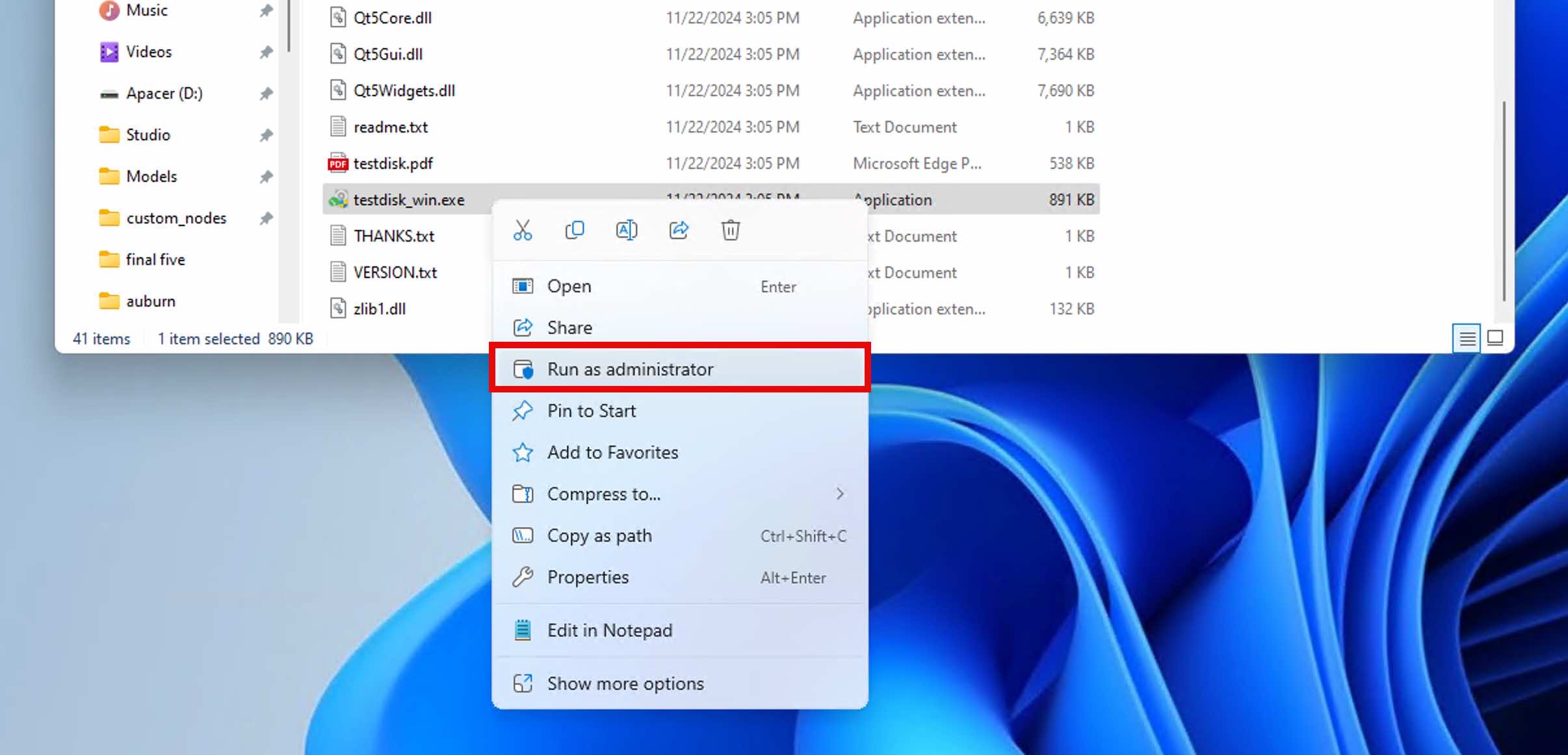
- Choose Create to start a new log file and then select your unallocated drive from the list. You will be asked to specify the original partition table type (TestDisk usually detects this automatically).
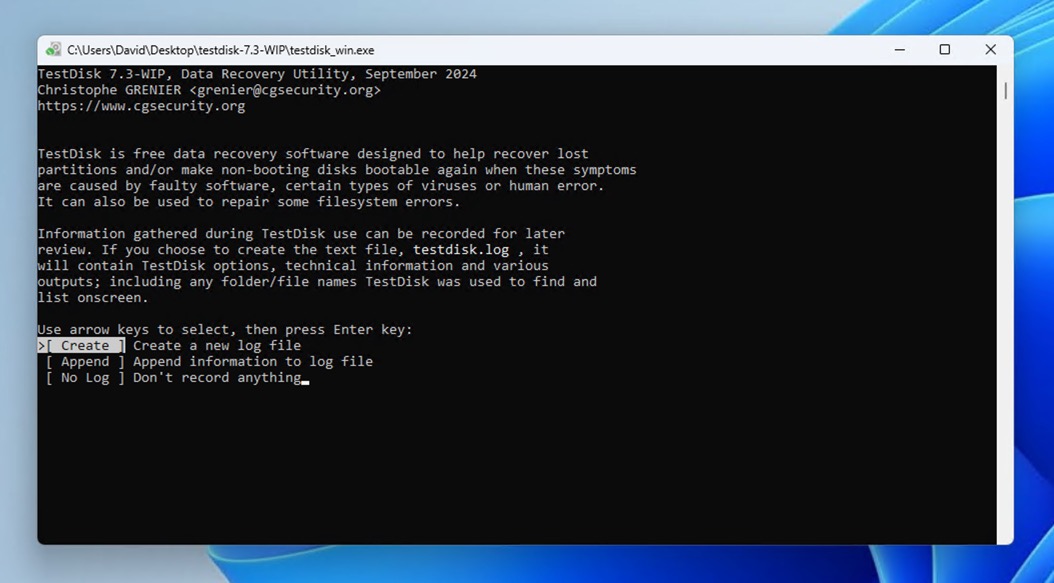
- Select Analyse and press Enter to examine your current partition structure.
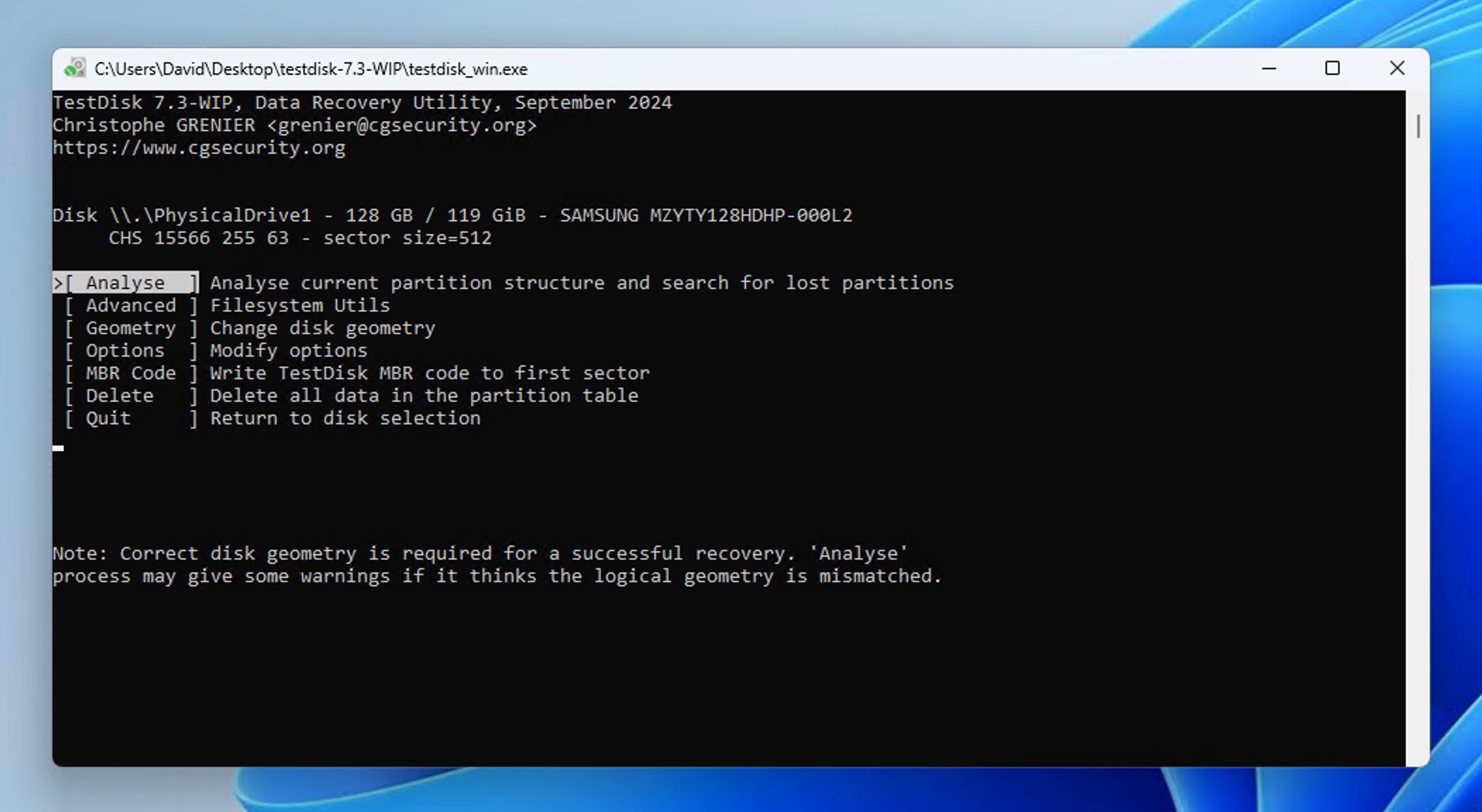
- Choose Quick Search and wait while TestDisk scans your drive. The tool will display results in real time, showing any partitions it finds. Once the scan completes, you’ll see a list of found partitions.
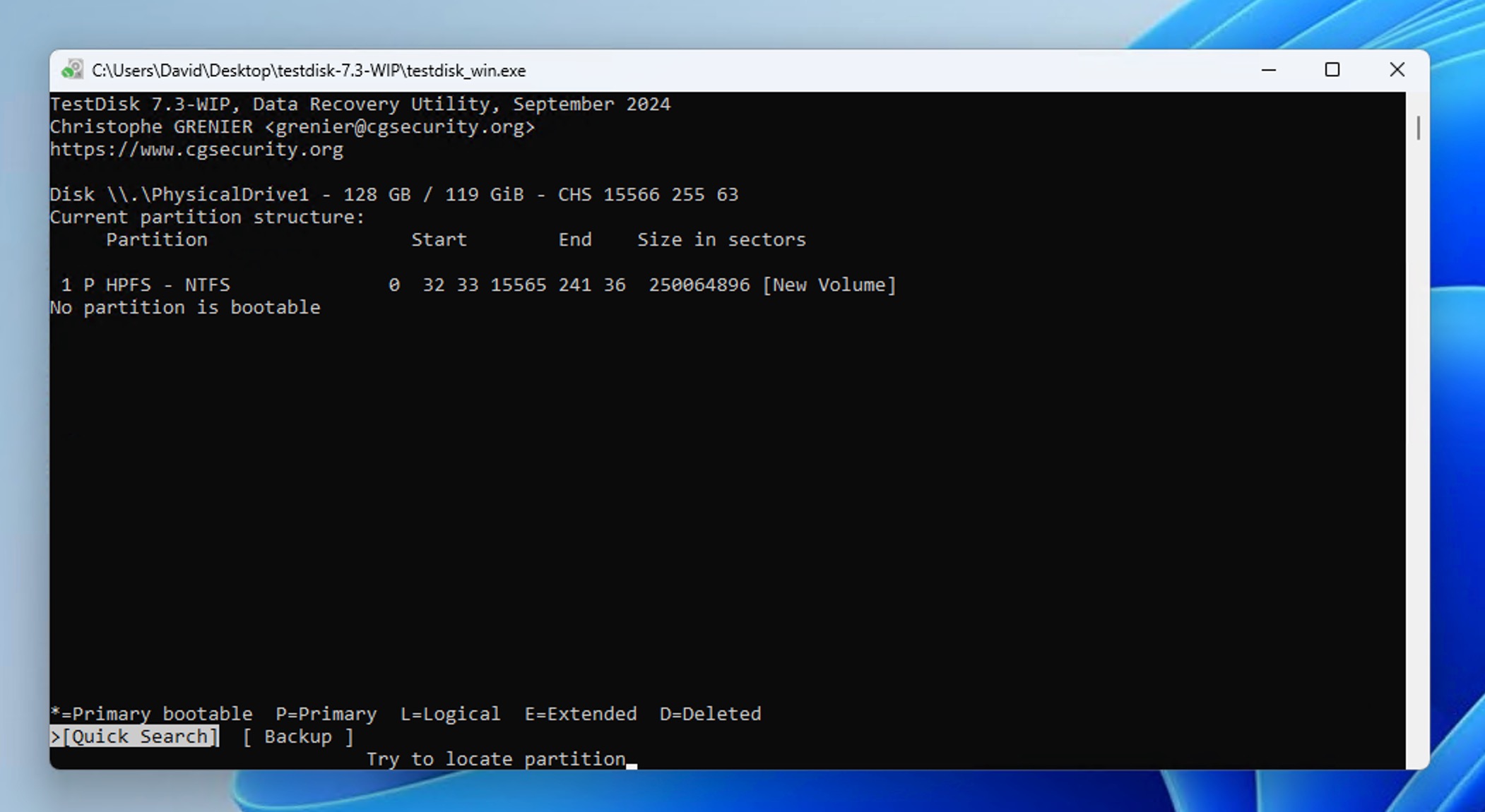
- Use the arrow keys to highlight the partition you want to recover. You can preview its contents by pressing P on your keyboard.
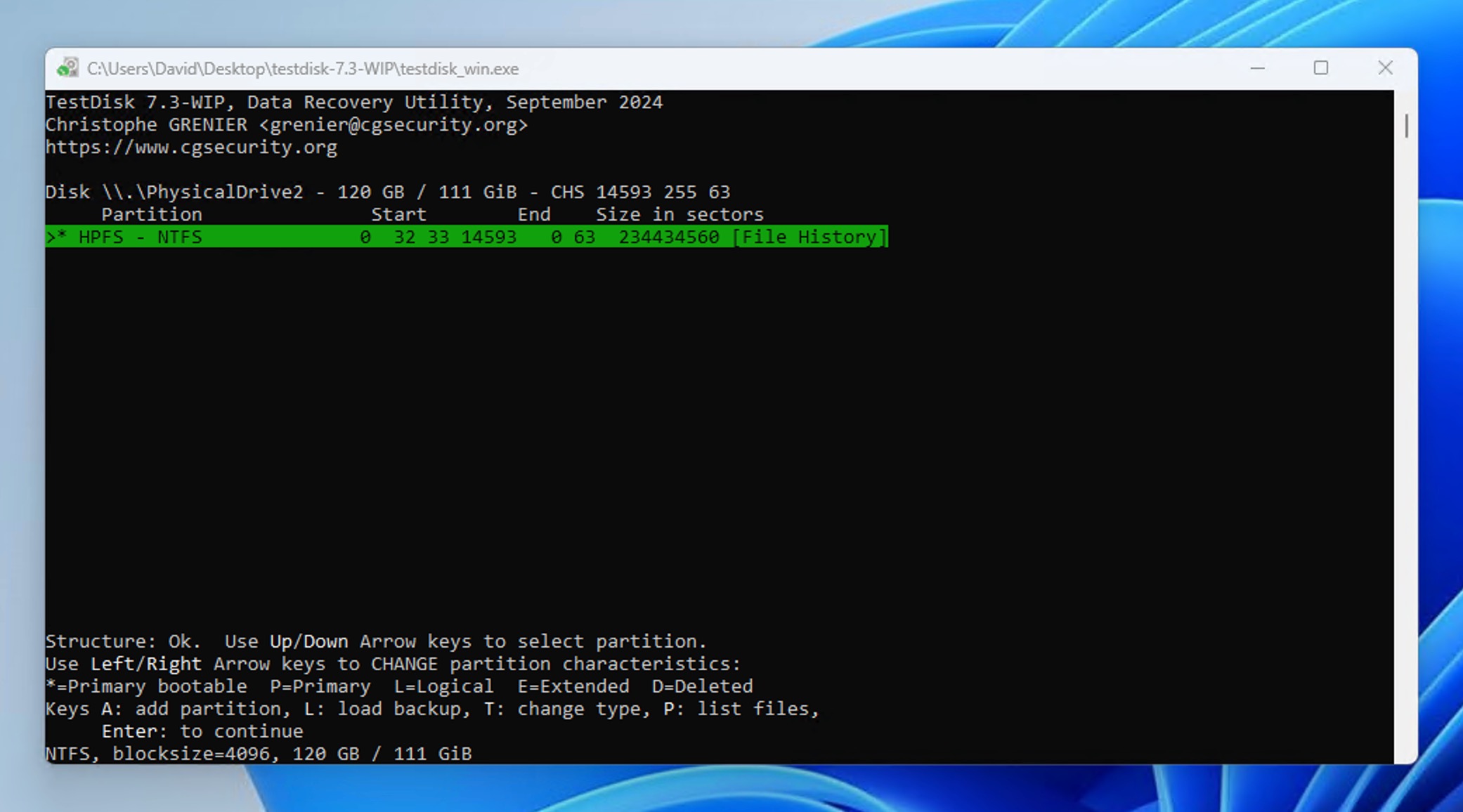
- After selecting the partition for recovery, you can press Enter to continue and then select Write. Confirm the action and wait a short while.
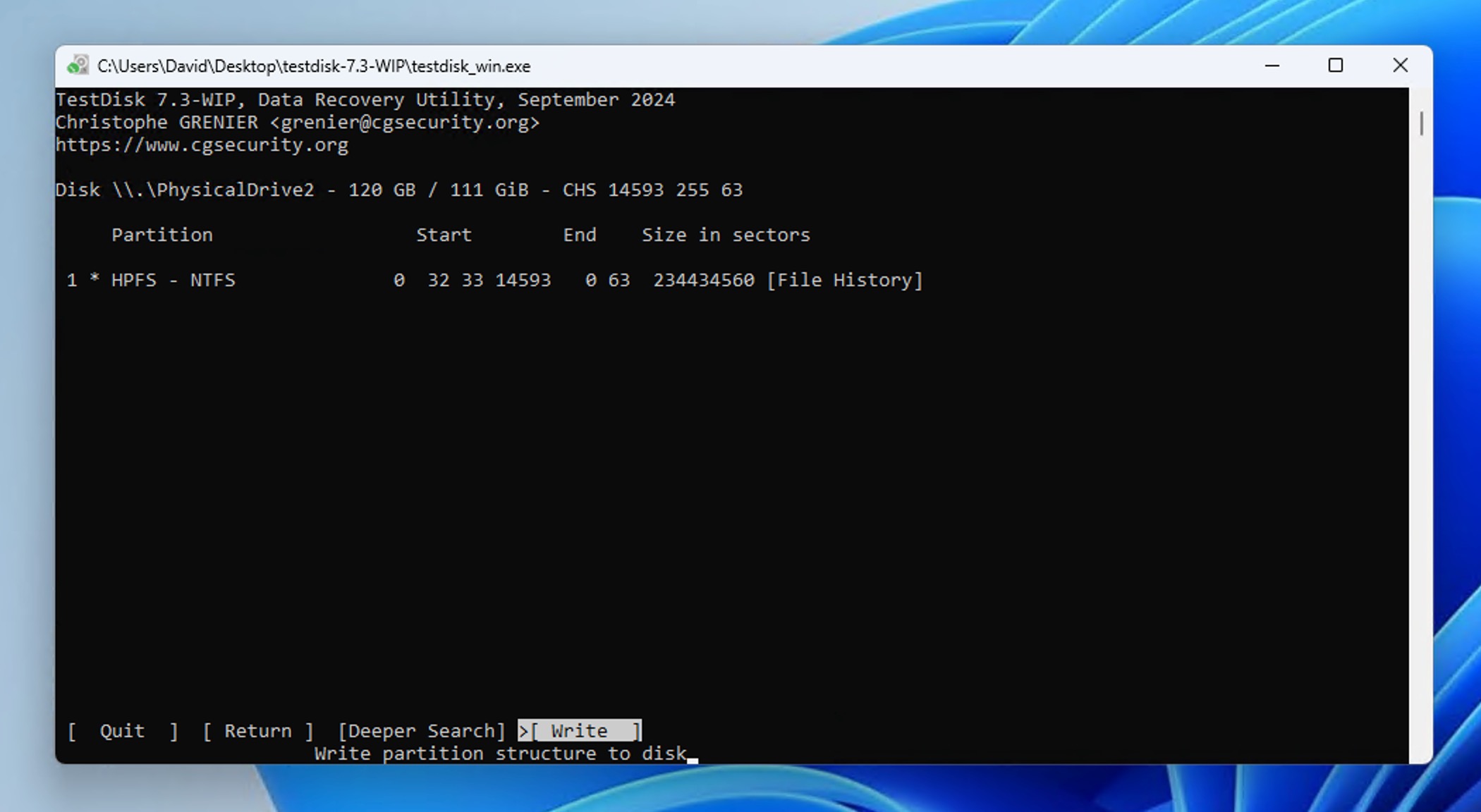
If Quick Search didn’t find your partitions, don’t panic. The Deeper Search option (available after Quick Search completes) can often find partitions that Quick Search misses, though it takes longer to complete.
If TestDisk successfully recovers your partition structure, your drive should no longer show as unallocated in Windows Disk Management after you restart your computer. All your files should be accessible normally through File Explorer.
Method 2:Add Space to an Existing Partition
If part of your hard drive shows as unallocated space and you’ve already recovered or don’t need any data that was stored there, you can add this space to an existing partition to make it usable again.
While this method won’t recover any lost data, it’s one of the easiest ways to fix an unallocated drive since it uses Windows’ built-in tools and doesn’t require any third-party software.
Here’s how to extend a partition using Windows Disk Management:
- Right-click Start and click Disk Management.

- Right-click the existing partition you want and click Extend Volume.
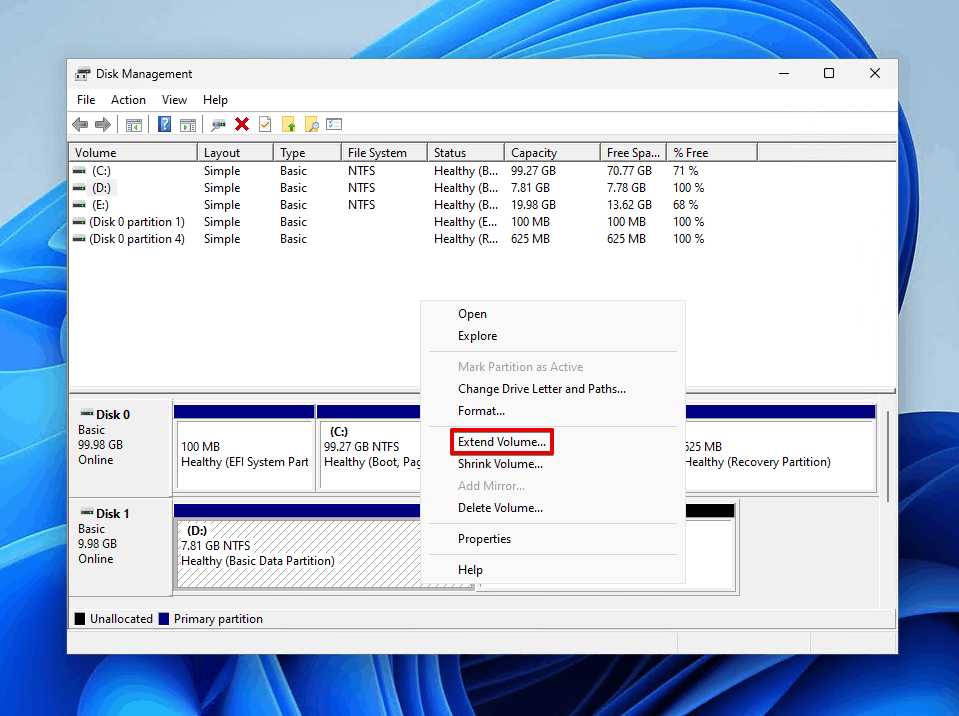
- When the Extend Volume Wizard appears, click Next.
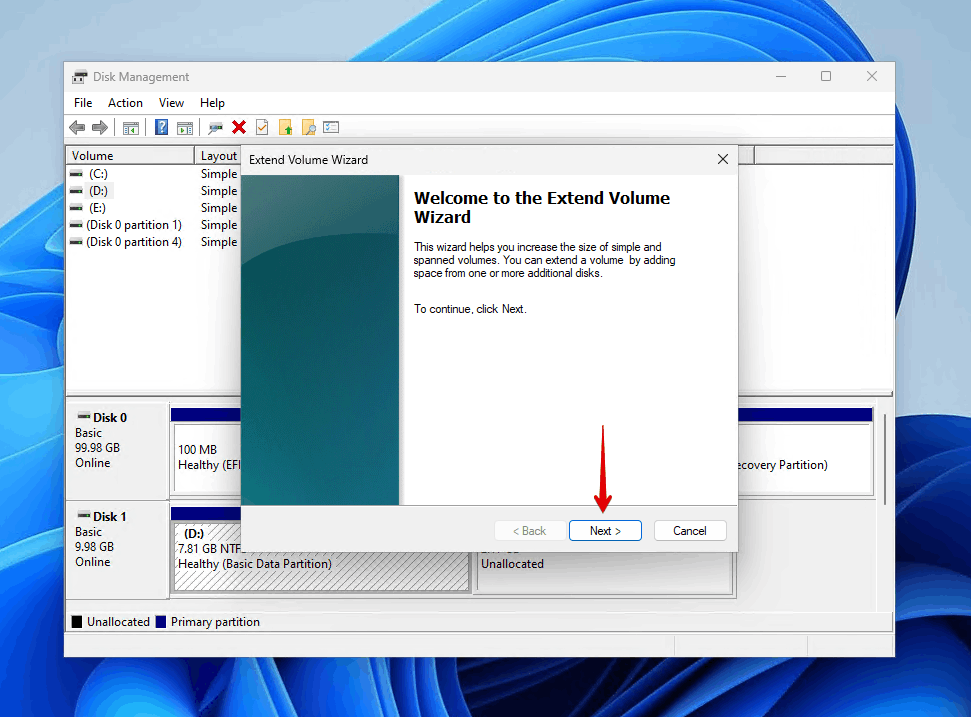
- On the Select Disks screen, the unallocated space should already be selected, so you can simply click Next. The Selected field shows how much space will be added.
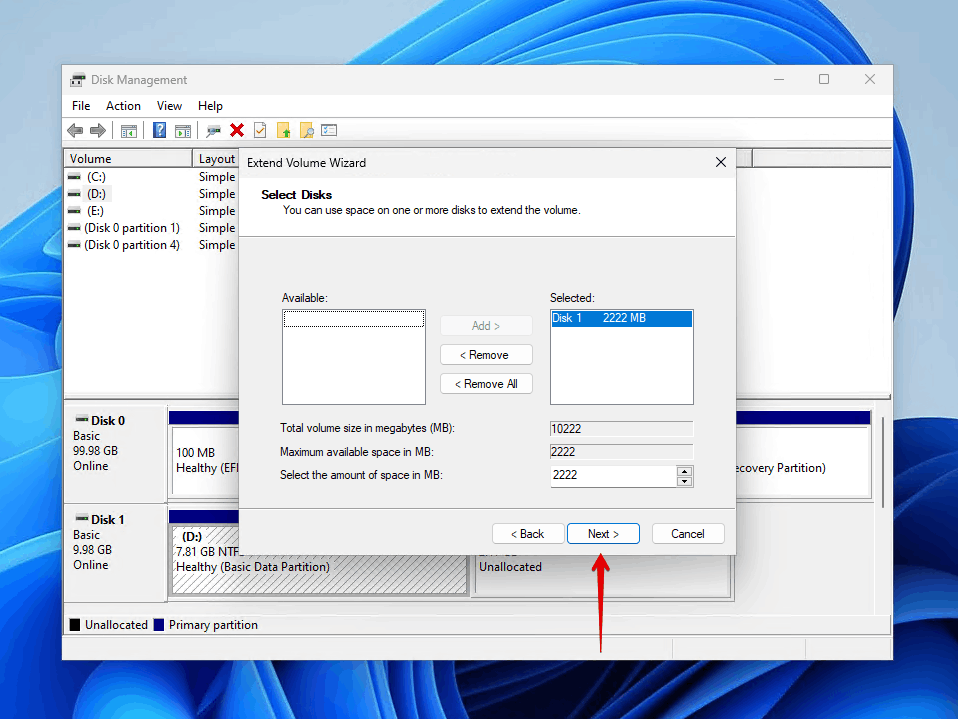
- Click Finish to complete the process.
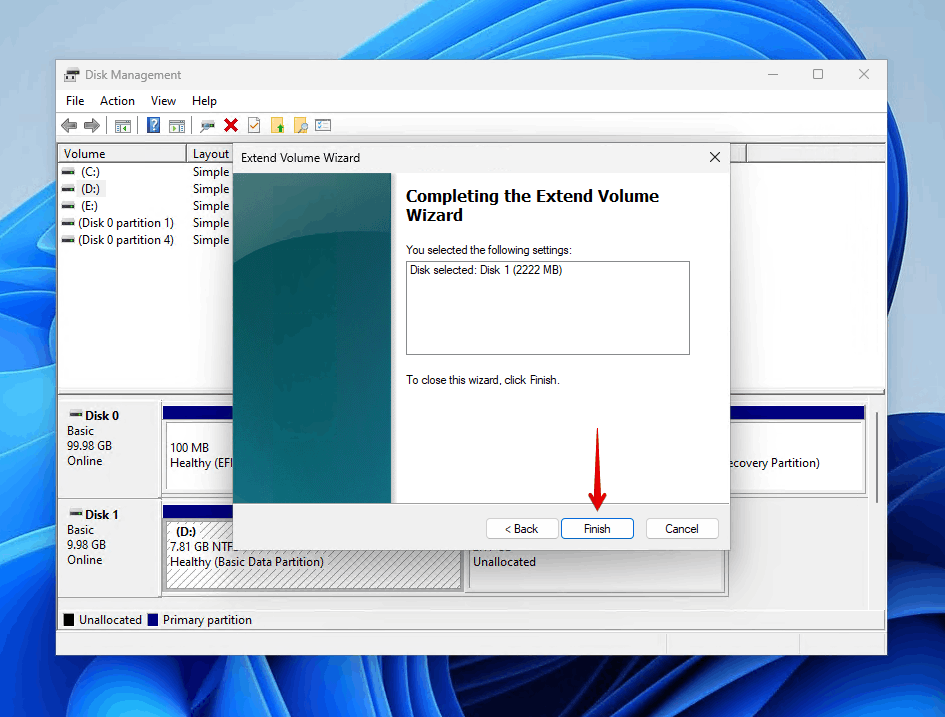
Important: You can only extend a volume to unallocated space that’s directly adjacent to it on the same disk. If there’s another partition between your target volume and the unallocated space, the Extend Volume option will be grayed out.
Method 3: Create a New Partition Using the Unallocated Space
If you’ve already recovered your important data (or there wasn’t any to recover), then you can create a fresh partition using the unallocated space.
When creating a new partition, you’ll need to format it to create a file system on it, and Windows offers two formatting options:
- Quick format: This option simply prepares the space for use by creating a new file system structure, without overwriting the actual data sectors.
- Full format: This overwrites every sector with zeros and makes any previous data completely unrecoverable.
Since the Quick format option is almost always perfectly sufficient, that’s what the following instructions will use:
- Right-click Start and click Disk Management.

- Right-click the unallocated space and click New Simple Volume.
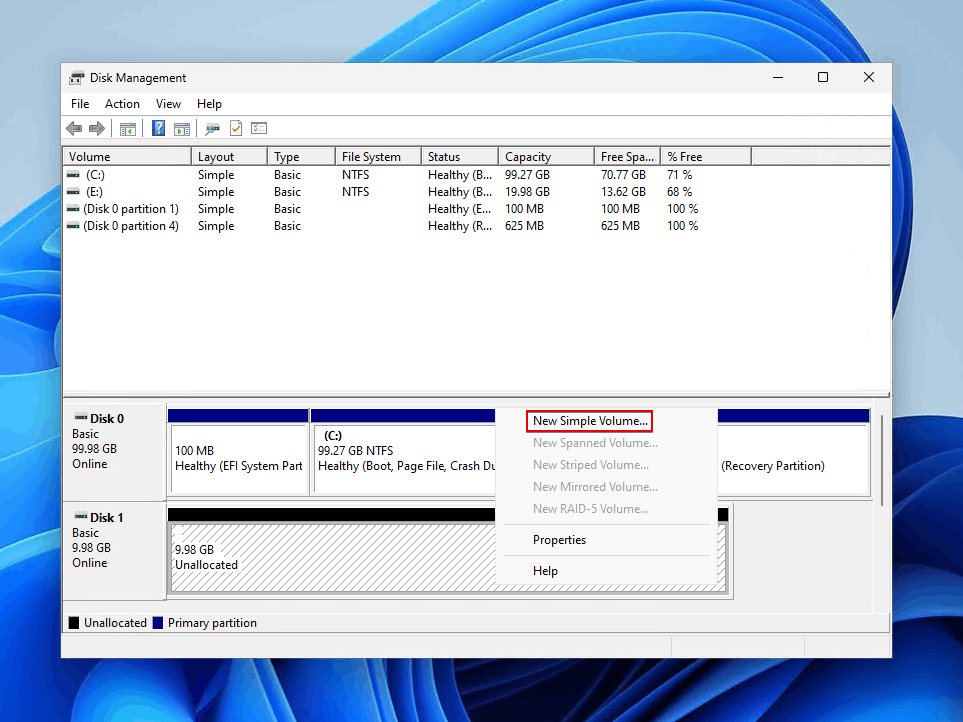
- Click Next when the New Simple Volume Wizard appears.
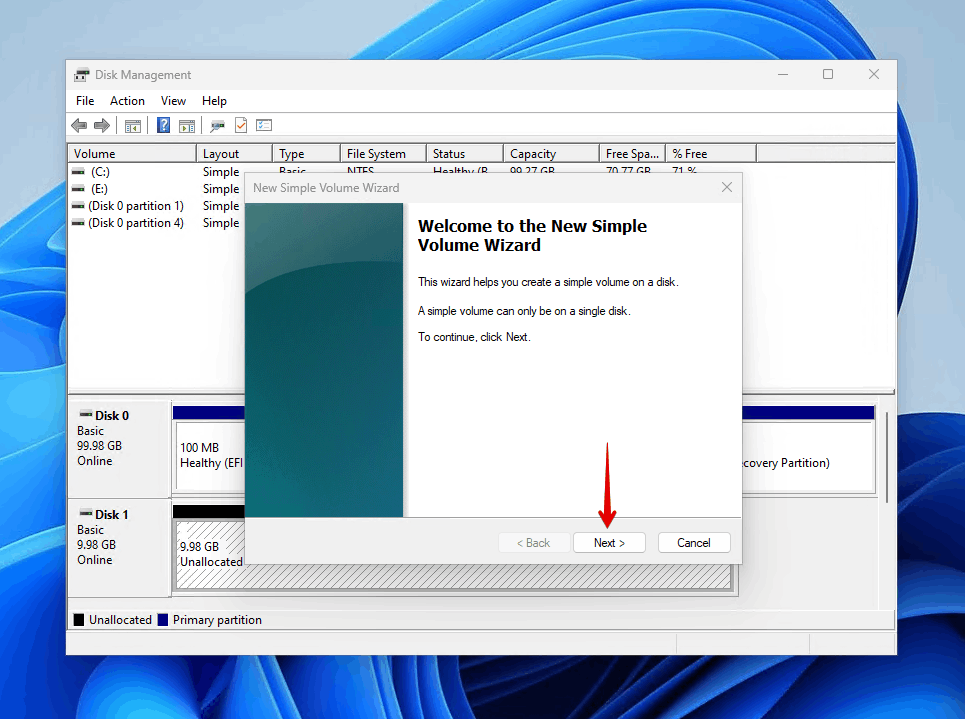
- Specify the volume size (by default, it will use all available unallocated space) and click Next.
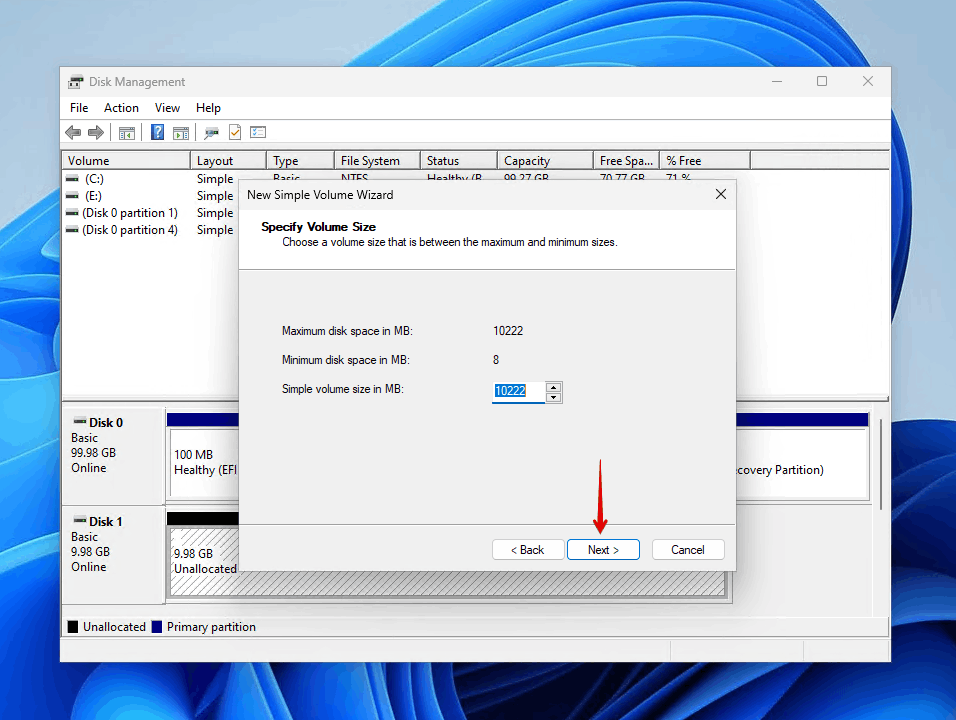
- Choose a drive letter that isn’t already in use and click Next. Windows will use this letter to identify the drive in File Explorer.
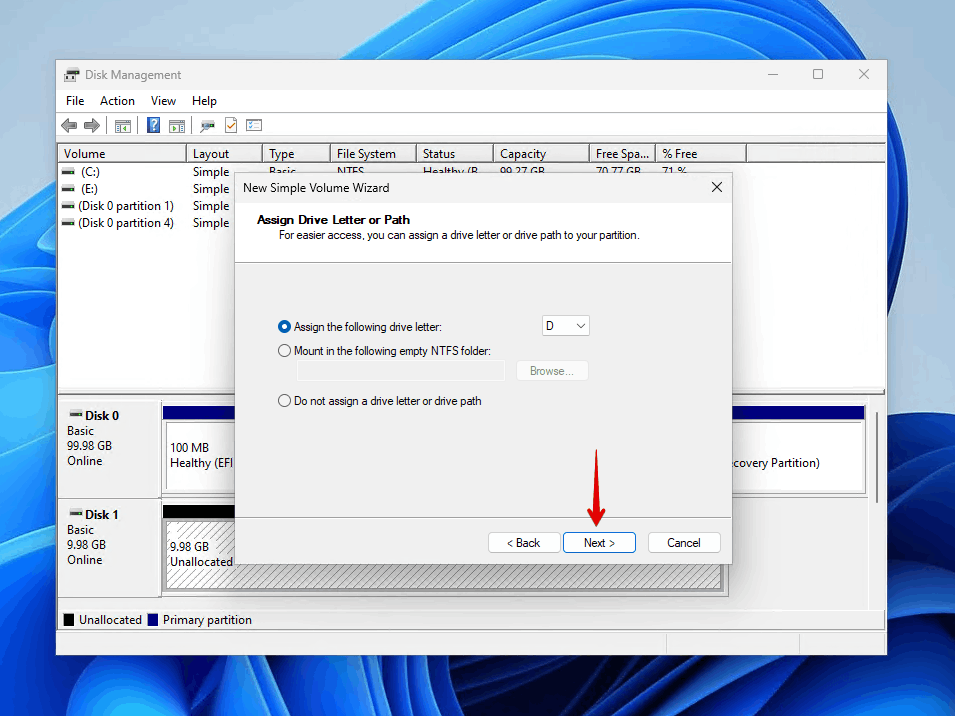
- Keep Perform a quick format selected or select it if it isn’t already and choose NTFS as the file system for best compatibility with Windows. If you want to access the partition from a different operating system, then FAT32 or exFAT is. a better choice.

- Review your settings and click Finish.
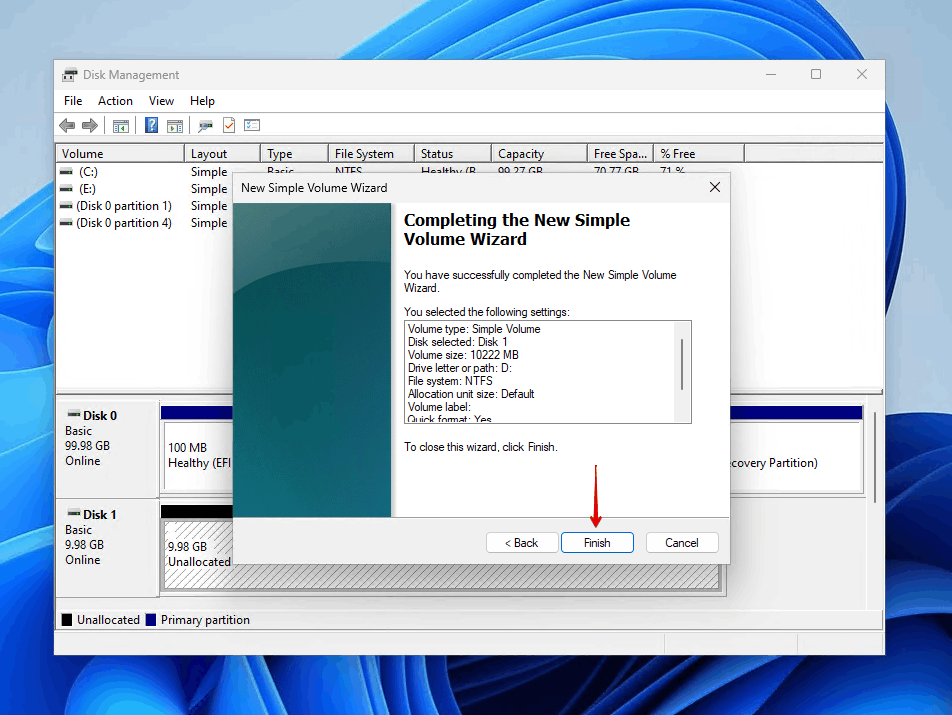
If you’re creating a partition on an SSD, consider leaving about 10% of the drive’s total capacity as unallocated space. This unallocated space acts as “overprovisioning” that helps maintain the SSD’s performance and longevity. By not making it accessible, you never have to worry about it.
Conclusion
I hope that you’ve reached this conclusion with your data safely recovered and your unallocated drive fixed. While having a drive suddenly show as unallocated can be a stressful experience, the recovery process is, as shown in this guide, typically straightforward thanks to easy-to-use data recovery tools like Disk Drill. The key is to approach the situation methodically: first protecting your data through backup and recovery, then addressing the underlying issue.
FAQ
- Recover the original partition structure using TestDisk.
- Add the space to an adjacent existing partition.
- Create a new partition in the unallocated space.
- Right-click Start and click Terminal (Admin). If you’re on Windows 10, click Windows PowerShell (Admin).
- Type diskpart. Press Enter.
- Type list disk. Press Enter. Remember the number of your unallocated hard drive.
- Type select disk *. Replace * with the number of your unallocated hard drive. If you’re only targeting a portion of the disk, run the commands list volume and select volume * instead.
- Type clean. Press Enter.
- Type create partition primary. Press Enter.
- Type format fs=ntfs quick. Press Enter.
- Type assign. Press Enter.

